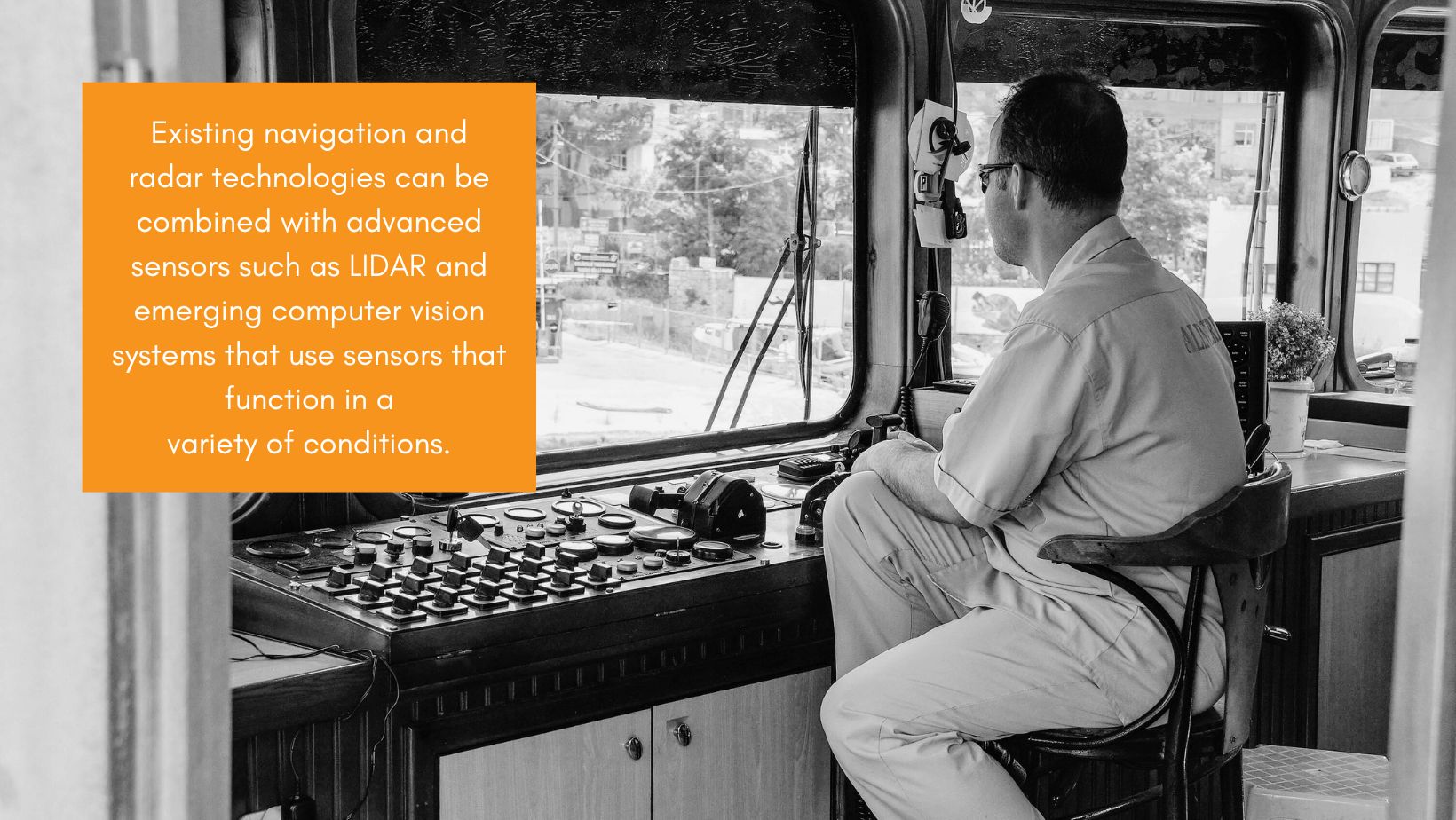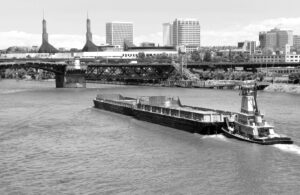The barge transportation industry has been vital to the US economy for centuries, providing a cost-effective and environmentally sustainable way to move massive quantities of cargo along the nation’s inland waterway system. This essential mode of freight transport has played a crucial role in enabling economic growth and trade for the United States.
While the barge industry’s resilience and reliability have stood the test of time, it is now proactively embracing cutting-edge automation technologies to modernize and enhance operations well into the future. Innovative companies within the sector recognize the potential of automation and AI to drive new efficiencies, cost savings, and competitive advantages. Through the measured adoption of barge automation technologies, the industry is positioning itself to optimize growth opportunities safely while keeping pace with evolving market demands.
It’s true: Discussions of automation and AI in the barging business typically conjure visions of driverless boats deftly navigating the waterways. And while that technology is in development and testing phases, it is not ready for widespread adoption.
However, the barge industry is indeed making significant strides to implement automation, primarily focusing on streamlining information exchange and enhancing business operations.
New Technologies in the Barge Industry
Automation is a hot topic no matter the industry. Everyone is wondering what processes can be automated and how to use AI to replace labor-intensive tasks. Barge transportation is no different, especially given the ongoing shortage of skilled labor even as the industry is poised for expansion. Traditionally, barging teams have relied on manual processes and human oversight for tasks such as navigation, cargo handling, and documentation. However, as technology continues to advance, there is a growing recognition of the potential benefits that automation and AI can bring to the sector.
Automated Navigation
For instance, technology is under development for automating inland navigation. Existing navigation and radar technologies can be combined with advanced sensors such as LIDAR and emerging computer vision systems that use sensors that function in a variety of conditions. When controlled through advanced algorithms, this technology can enable driverless operation with remote supervision. In fact, recent tests in Belgium and Norway have used new tech to successfully maneuver an inland vessel through real world conditions using a combination of fully autonomous navigation and remote-controlled operations.
Advancements in Cargo Handling
The inland barging industry is also looking to advancements currently being used for container ships and cranes operating in large ports. Though at a much larger scale, the international shipping industry already uses automated cranes for loading and unloading containers from ocean-going ships in major terminals, and AI technology offers the prospect of coordinating unloading to autonomous onshore vehicles for a seamless and more efficient delivery to the final destination. Installing automated cranes at all small inland ports might not deliver a similar return on investment, so the barging industry is exploring the prospect of scaled down variations that could be installed on boats themselves to drive efficiencies at terminals of all sizes.

Today’s Barge Automation Technology in Practice
While exciting, fully automated navigation and delivery operations remain in the testing stages. Rolling out such changes presents numerous challenges outside the realm of technology, from legal and safety concerns to obstacles in retrofitting existing boats with the required equipment.
In the meantime, the industry is taking a progressive approach by first automating information exchange and business operations on shore. By automating business processes—things like boat-to-shore communication, documentation, billing, data analysis, and so on—in an incremental fashion, barge operators can realize efficiencies while freeing crew members to focus on critical tasks related to navigation, cargo operations, and safety.
Today’s barge automation opportunities include:
- Automated data sharing to reduce manual entry of cargo manifests, bills of lading, regulatory paperwork, etc.
- Automated systems that handle routine reporting and notifications to terminals, customers, and other stakeholders rather than crews having to send these updates manually.
- Real-time tracking and visibility into operations for better monitoring.
- Integrated automation systems for a seamless data environment where crews don’t have to re-enter the same information across multiple platforms.
BargeOps barge management software incorporates automation opportunities at multiple steps, driving efficiency in a barging business.
How Business Automation Drives Efficiency
BargeOps technology is leading the way in the barging industry with fleet, towing, and barge management software that drives process automation via an easy-to-use platform. By implementing some or all BargeOps modules, a barge business can adopt automation at its own pace without letting outdated technology lead to inefficiencies.
BargeOps Onshore
One way the barge industry is embracing technology is by automating tracking of day to day activities in fleet management and towing operations. For instance, BargeOps Onshore uses automation in its barge management tools, recording activities like mid-streaming a barge into the fleet, keeping track of how long it’s in the fleet, and then automatically invoicing the customer when it moves out of the fleet.
BargeOps Onshore tracks operational activities using a barge ticketing system. The system automatically records loading, unloading, midstream-in, midstream-out, shifting, and daily fleeting charges as they occur. It makes use of this operational information to automate invoice generation. By automating these previously time-consuming processes, the system saves time, improves accuracy, and prevents lost revenue due to missing activities that translate to billable events.
BargeOps Onboard
Another age-old challenge made easier through automation is communication at each stage of a barging operation. BargeOps Onboard is boat fleet management software that uses technology to automate the exchange of information, such as orders and the movement of barges, between shore-based dispatch and boats.
Traditionally, dispatching orders was a time-consuming, manual process. A dispatcher would call the orders over the radio, with the captain transcribing all the details by hand before that information was later re-entered to create invoices. Likewise, getting up-to-date traffic and operational updates from boats to shore offices required tedious manual log entries by office staff.
Using BargeOps Onboard to automate information exchange, details are sent and entered automatically. Orders and updates are transmitted and logged in real-time. This frees captains, crews, and office teams from data entry tasks associated with traffic management, allowing them to focus on critical activities that better utilize their expertise.
BargeOps Analytics
An often overlooked advantage of barge business automation is the resulting availability of digitized data for automated analysis. The BargeOps Analytics module automatically generates actionable insights based on the data from the use of BargeOps Onshore and Onboard. This information can be used to inform decisions about everything from increasing revenue from assets and improving the efficiency of operations to lowering overall costs.
For instance, if a barge moves from Point A to Point B, and multiple boats work with that barge, BargeOps Analytics will determine how to allocate the revenue earned among the boats. Built-in algorithms help streamline operations by analyzing events such as lock delay time, shifts between O/D pairs, midstream-in/out times, fleeting days, state taxes by river segment, and much more.
Gain a Competitive Edge by Implementing Leading-Edge Barge Tech
Additional BargeOps modules use cutting-edge technology to automate functionality including freight contract management, VGP compliance, terminal management, and more.
Though futuretech like driverless boats is still years in the offing, automation is already transforming the barge industry, with companies like BargeOps leading the way. The latest technologies allow barging companies to automate manual processes, streamline communications, and create actionable analytics—all with an eye on increasing safety and productivity.
Schedule a free demo today to learn how automation through BargeOps can drive efficiencies and give your business a competitive edge.


